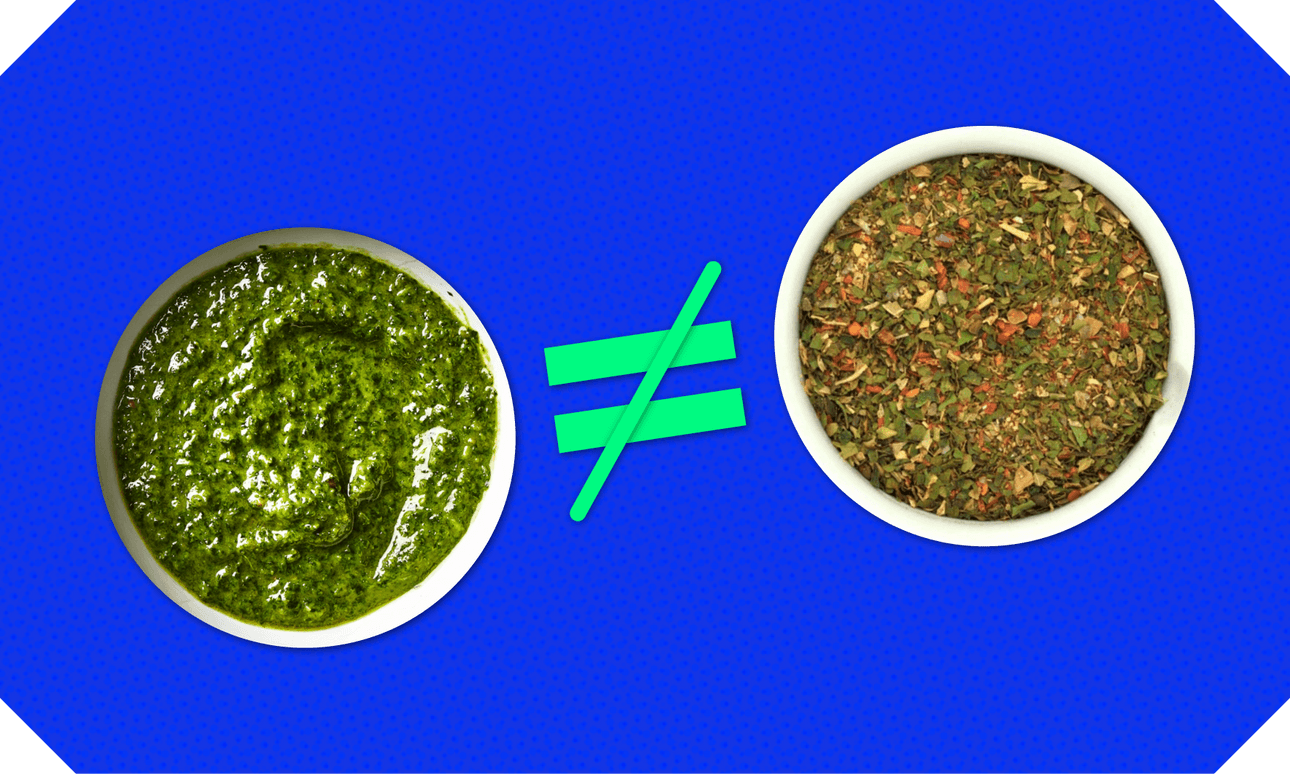Someone from the birthplace of chimichurri on what the sauce is and isn’t – and how to make the real stuff (mum-approved).
A new sauce has made its way into New Zealand’s food vocabulary: chimichurri. I do not know how it got here, nor if people know any more about it apart from the fact it’s made of herbs and comes from the land of beef, Argentina (and our little brother country Uruguay). In an exciting twist, that is also where my parents are from, and where I lived as a kid. So while chimichurri and I don’t exactly look alike, we do share an origin.
In the past few months, my reaction to mentions and appearances of “chimichurri” have gone from surprise, to excitement, to eye-rolling. Friends have passed me many little pottles of “chimichurri” without the requisite shame that comes with touching an abomination. Restaurants have put chimichurri on the menu then served up a parsley pesto. And even my partner has come home with bottles of random herb sauces from Farro, which are labelled “chimichurri”.
For over 20 years I have respected their culture, by only referring to tomato sauce as “tomato sauce” and mayonnaise as “mayonnaise” and aioli as “aioli” even though, let’s be honest, it’s mayonnaise with a twist. Just like tomato sauce has specific ingredients – concentrated tomatoes, sugar, salt, acetic acid, citric acid, natural flavours, spice – so too does chimichurri. It is not any random herb you’ve got blitzed together (that would be pesto).
Chimichurri is a table sauce, meaning it’s supposed to keep, and therefore in my experience it is never made from fresh herbs but rather rehydrated dried ones. This goes against every chimichurri recipe on Google, but must be right because it’s how my mum has always done it. And yes, one of the dried herbs is parsley, but there is also oregano, basil, paprika, laurel and ají molido, which is all too often misinterpreted as ground chilli. But ají is not a chilli as we think of them here. Argentinians would cry if they were made to eat anything actually spicy. Ají is a sweet red capsicum that gets dried and then ground to make ají molido. It is not available in New Zealand supermarkets’ spice aisles, and there is no true chimichurri without it.
Now, I know you can’t be trusted to measure out the right ratios of herbs, and I can’t be relied on to give the correct ones. That wouldn’t really be authentic anyway, because most Argentinians use a pre-mixed sachet since they are busy people with a lot of shoes to buy and a lot of psychotherapy appointments. Luckily, one Latin store, Pachamama, imports them all mixed together handily. They still require a little bit of preparation. Here are instructions, direct from my mum on messenger:
“Put some in a lil pot. Add some boiling hot water to hydrate
Leave for a min, if too watery, drain.
add some vinegar and olive oil. Maybe salt if you want
Done”
Vinegar should be used sparingly. She says “any” vinegar is fine, but balsamic vinegar is a “bit strong”, so probably red or white wine vinegar is best. If you make the contents of your sachet in a little jar, and only ever use a clean teaspoon to drape it over your steak, it should last a while.
Now, while you may already feel like a chimichurri expert, remember it’s not the next tomato sauce. While t-sauce is put on anything from sausages to two minute noodles, that is not the case for chimichurri. It is a sauce for grilled meat or chorizos, and doesn’t have any business being in any other meals. Buen provecho and sorry to vegetarians.



